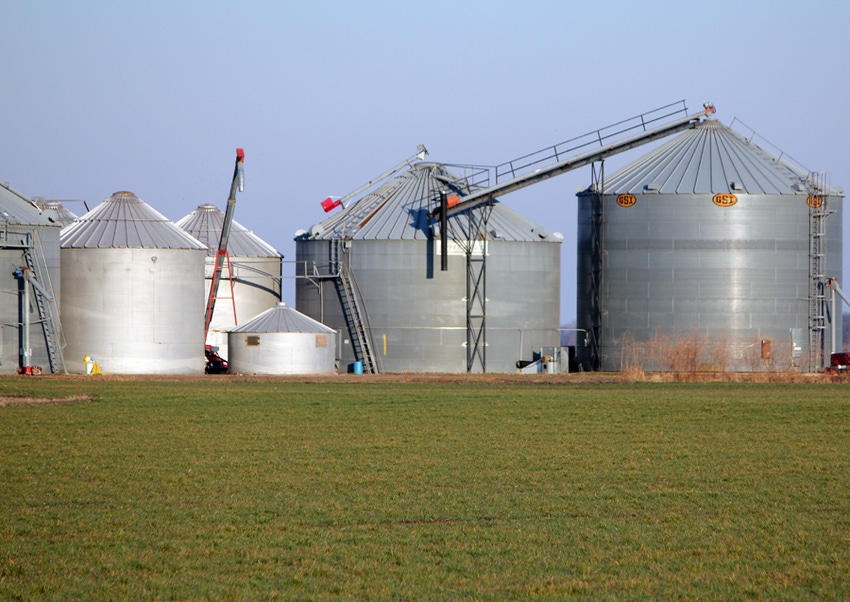
Farmers don’t build grain storage because they like the look of shiny metal buildings. Storage makes money, sometimes lots of it.
Farm Futures long-term study of post-harvest marketing strategies shows clearly that long-term storage of corn and soybeans from harvest to early summer is the most successful way to add value to crops on average.
But for all its benefits, storage isn’t without risk. Every year is different, so it makes sense to evaluate conditions every fall. Results for storage strategies on 2018 crops proved this once again. A unique year that began with a trade war and included record floods demonstrated how storage can make – and lose money.
Storing corn on farm was the easy winner, earning an average of 95 cents a bushel after costs for handling and interest paid on loans that were paid off from proceeds of cash sales at harvest. A big rally in May and June caused by record planting delays made all nine of the strategies studied profitable, at least on paper. Futures gains were big enough to produce profits for the strategy of selling corn at harvest and buying call options, historically the least successful way to store.
Since 1985, on-farm storage earned an average of 27 cents a bushel at the nine terminals included in the study. But the final selling price beat the harvest price only 56% of the time. Some years on-farm storage is a loser, too.
The most consistent storage strategy for corn is the storage hedge – selling July futures or hedge-to-arrive contracts at harvest to capture basis appreciation. This made money nearly three of every four years in the study, though long-term average gains were 13 cents a bushel, half the profit made by unhedged inventory.
The storage hedge shined brightly in an unusual corner last year – soybeans. Normally, long-term storage hedges on soybeans are the least successful way to market soybeans – just breaking even at the eight locations included in the study. But on 2018 soybeans selling July futures or HTAs at harvest netted 42 cents a bushel, more than on-farm storage unhedged.
Very weak harvest basis for soybeans a year ago – in some places more than $1.50 a bushel under – coupled with large carries in futures combined to make the storage hedge a winner. Both factors stemmed from the trade war with China that choked off normally brisk fall exports of soybeans. To keep those beans off the market, basis was weak and spreads from November to July futures swelled above 50 cents a bushel, a historically unusually large amount of carry to provide an incentive for hedgers to store.
Carries on 2019 soybeans started out large through the summer but began to narrow after USDA cut its production estimate Sept.12. At 45 cents a bushel they’re still wide, but narrower than the 52 cents traded earlier. Soybean basis is also stronger than a year ago, though it remains below average due to still large carryout and uncertainty over Chinese demand.
December-July carries in the corn market are wider than average, running around 27 cents a bushel after trading out around 32 cents this summer. But basis is much stronger than a year ago, running above average in some locations. Harvest delays and tighter supplies, especially in the eastern Corn Belt, could cause an unusual year of grain flows. Southeast hog and poultry areas that normally import corn from the Midwest should start buying sooner than normal following severe drought and hurricane damage.
There’s another wild card this fall. Storage charges on grain in deliverable locations for futures contracts is going up from five to eight cents a bushel. The goal of the change is to help futures and cash prices converge at deliverable locations, alleviating problems with weak basis. The change may increase carries, though it’s far from certain whether the fix will work.
But it’s another reminder that every year is different, and 2019 certainly is unique. Stronger basis could make the storage hedge less attractive for corn. And easing trade war tensions could reduce carry in the futures market for soybeans.
Averages and results from different locations included in the storage study can be downloaded below.
About the Author(s)
You May Also Like






